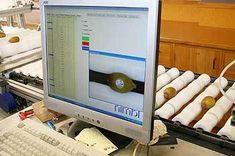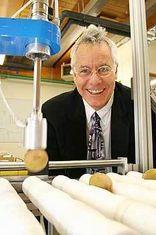

An automated kiwifruit packing system is set to revolutionise the New Zealand industry.
The machinery has been developed at Massey University by mechanical engineer Dr Rory Flemmer, with Zespri backing. It will allow buyers to receive exactly the grade of kiwifruit they require at the right stage of ripeness and could be in use as early as next season.
The impetus for Flemmer’s research came from Zespri’s concern at a lack of labour to pick and pack kiwifruit in New Zealand. Last week, the company calculated that off-shore fruit loss is likely to account for a NZ$19 million (£7m) drop in returns.
According to Flemmer, the new machine can grade to within 0.1g, use artificial vision to grade to Zespri standards, including recognising blemishes and determining soft spots, and can label, as well as pick and pack complex orders.
“The robot will not only reduce packing costs but will inspect and pack more consistently for 24 hours every day,” said Flemmer. “It will also collect data that will enable coolstore operators to decide which fruit to market and at what time. Information gathered can be used to provide custom-packed fruit for each market, and also to provide data on the kiwifruit as picked. For example, we will know how many fruits are coming in too large or small, too ripe or too blemished.”
Flemmer and students from the university’s school of engineering and technology custom-designed and built the machine. Only one packing line has been used so far, although the plant can run up to four lanes in each machine, packing 250 to 400 trays an hour. It is adaptable to pack almost any type of fruit or vegetables, and can be operated by about 1.5 staff each shift.
The next step is production of an automated robot to pick kiwifruit. “We expect to have the picker robot running in a couple of months,” said Flemmer. “It will be able to follow instruction to which part of the orchard to pick and will also store data - adding a whole new dimension to the traceability trend we are seeing. We also hope to use that robot for pollinating in the future, ensuring the robot is fully occupied in the different picking and pollinating seasons, and of course in different hemispheres as demand grows.”



